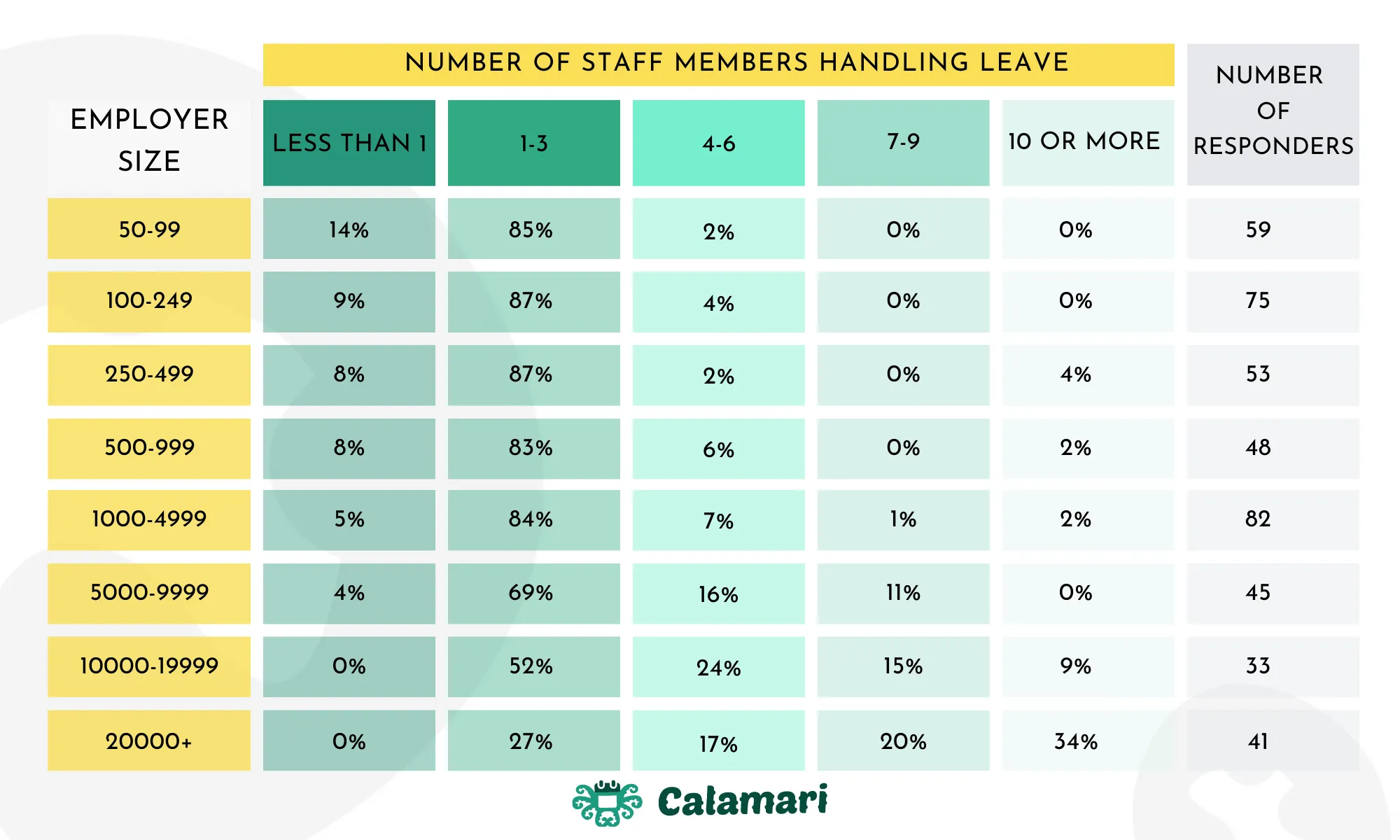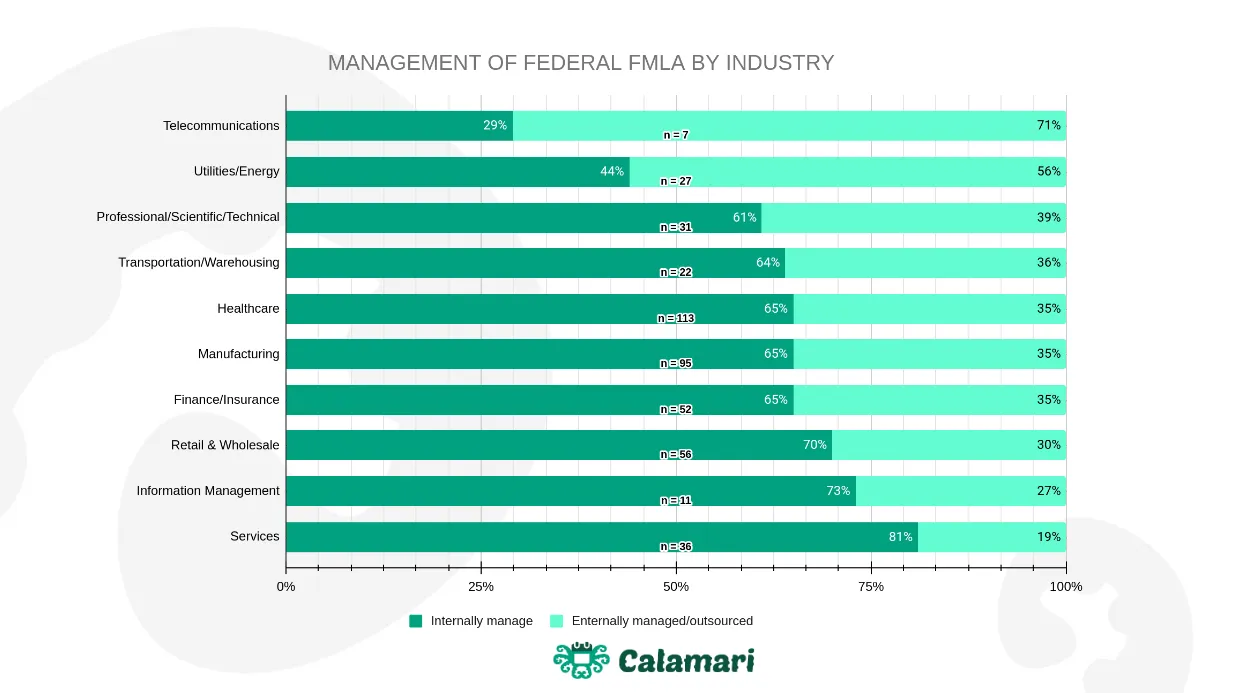The burden of leave management – report from DMEC summary


Leave management is one of the most painstaking elements of human resources management. According to the DMEC survey, the bigger and more technically sophisticated the organization, the more common is to use a dedicated leave management system.
The DMEC report delivers a full spectrum insight on the types of leaves the employers face and the ways they deal with them. Moreover, the publication gives a glimpse of a road toward more sophisticated systems during the company’s growth.
When leaves matter
In small companies (below 100 employees) the problem of FMLA leaves appears marginal, with 3 leaves annually on average. With the low number of leaves to process, it is seen (14% of responses) to not have a dedicated employee who works only on this aspect of leave management. The most common approach is to have between 1 and 3 employees focused only on the absence management aspect.

Yet as the company grows, the issues with leave management also do. The bigger the organization, the number of employees responsible only for the leave management also grows. If the company employs more than 100 employees (but less than 250) there is no dedicated employee only in 9% of cases. In the dominant number of cases (87%), the problem is handled by between 1 and 3 dedicated specialists.

With the growing company, the leave management team grows – sometimes reaching more than 10 people who work only with the leave management issues.
How many leave days to handle
The reason is pretty straightforward – the more employees the more reasons to take leave days and more unexpected events to handle.
When there are no more than 100 employees to take care of, the number of health-related leaves is usually no higher than three a year. With the growing organization, this number grows also. In an organization with a number of employees between 250 and 500, the number of leaves reaches 25 on average.

In a company of more than 20 000 employees, there are 4332 cases yearly on average – so in fact there could have been another large company composed of the leave-takers only. Considering that, it is not a surprise that there is a need for a large team to deal with the issue.
Who is outsourcing?
In every business, there are aspects that consume an increasing amount of time, materials and effort, while delivering little to no direct impact on its main activity. Accounting and IT infrastructure maintenance are among the most popular fields. The leave management system (also clock in and clock out tool), being both critical and non-contributing directly to the company’s profit is another field to outsource.
The research has shown that the bigger the company, the more likely it is to outsource the leave management. Only 7% of companies with a headcount below 100 outsource the leave management. In the largest of companies surveyed with more than 20 000 employees, there is a 36% share of companies that decided to outsource the leave management services.

There is also a strong correlation between the company’s industry and its approach toward outsourcing. Generally, the greater the technological sophistication of the industry, the more eager are the companies to outsource the leave management. In the telco, business there is a 71% share of companies that outsource, while in services there is a 19% share.

Co-sourcing
Among companies that outsource leave management, the dominant (82%) approach is co-sourcing, where a part of leave management is taken out of the company and another part stays in. It can take the form of using dedicated, cloud-based software that deals with compliance issues, while still having a staff that manages the software in the company.
The aspect of using the technology to support the leave management process has also been investigated in the report. Unsurprisingly, the smaller the company, the more common is to manage the leaves manually. Among the smallest organizations, up to 69% are doing it without the support of dedicated software.
In companies with up to 999 employees the share of manual-doers drops to 50% and in the biggest ones (over 20 000 employees) only 19% is performing all the work manually.

Summary
The report delivers an overview of the leave management in companies of various industries and sizes. Yet the most important part from the business owners’ perspective is that of the number of staff overseeing the leave management process. It clearly shows that there is a high need for specialists who take care of leave management as their 100% commitment.
Also, co-sourcing appears to be the most common and thus probably the best strategy, which combines all the advantages of securing the process in-house and tossing the costs and responsibilities outside. The greatest aid in the process is the proper leave management software.
If you wish to discuss this matter, don’t hesitate to contact us now!

















